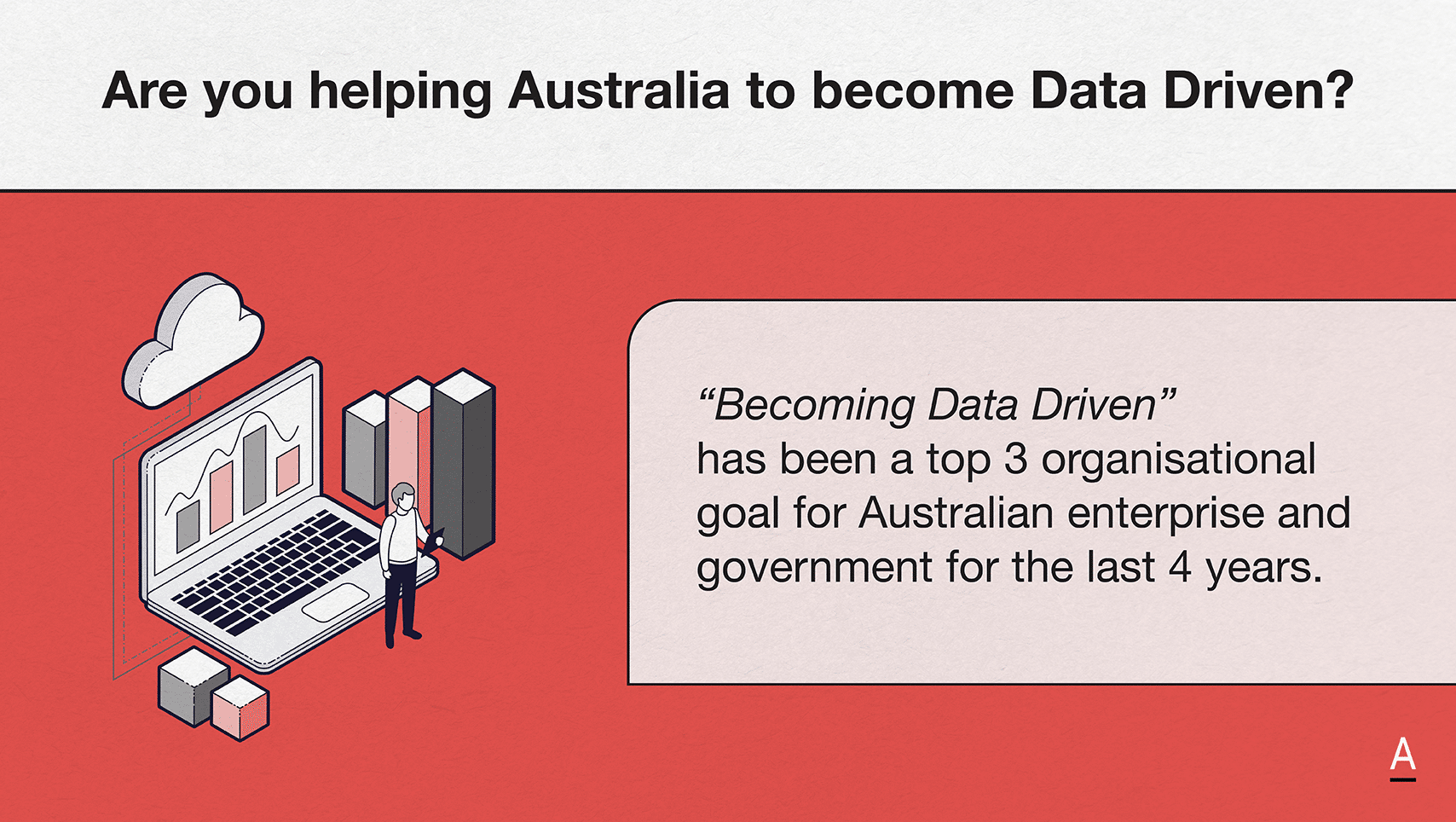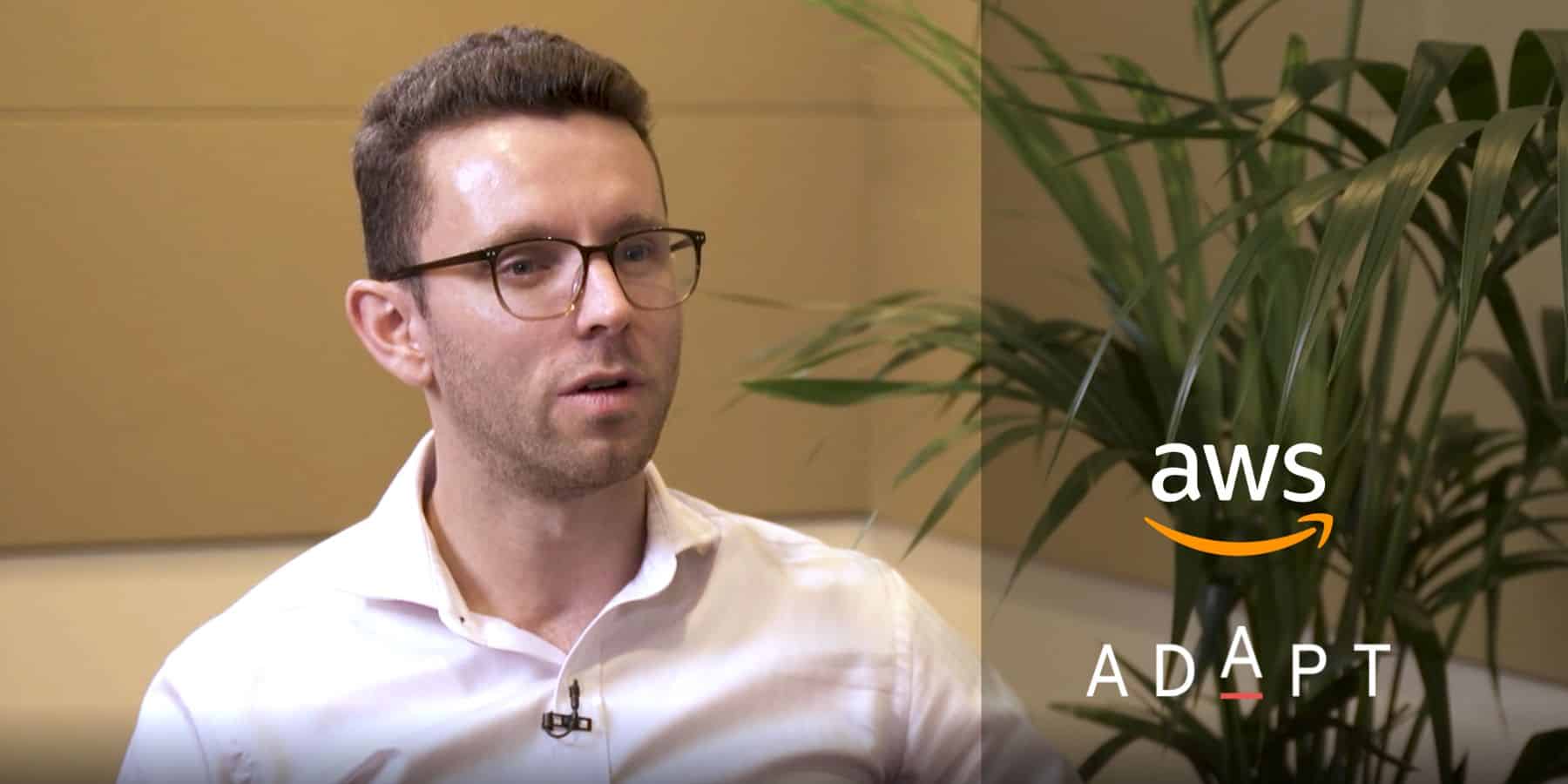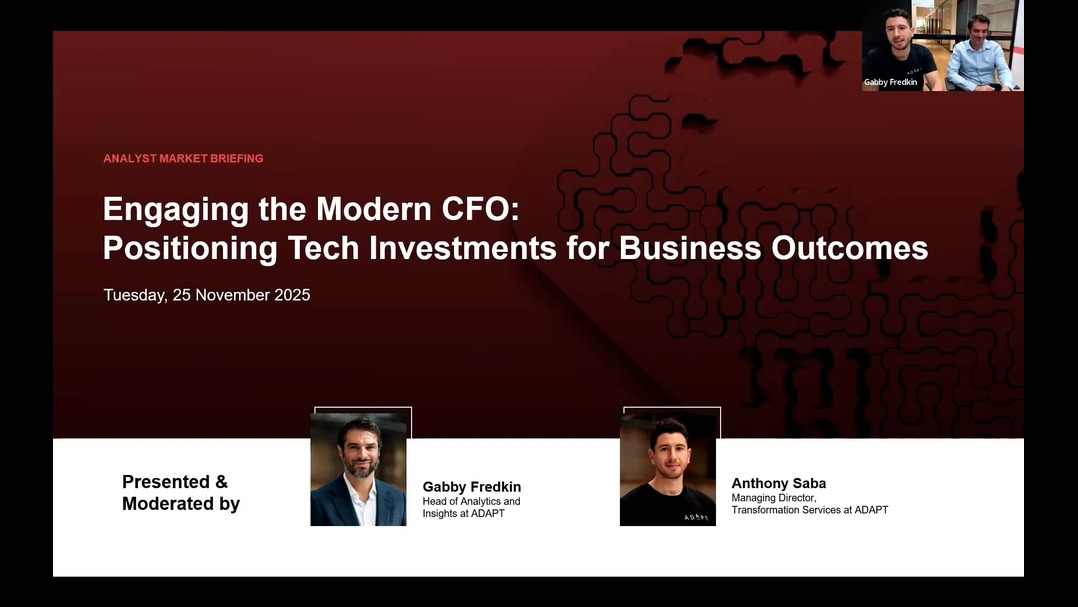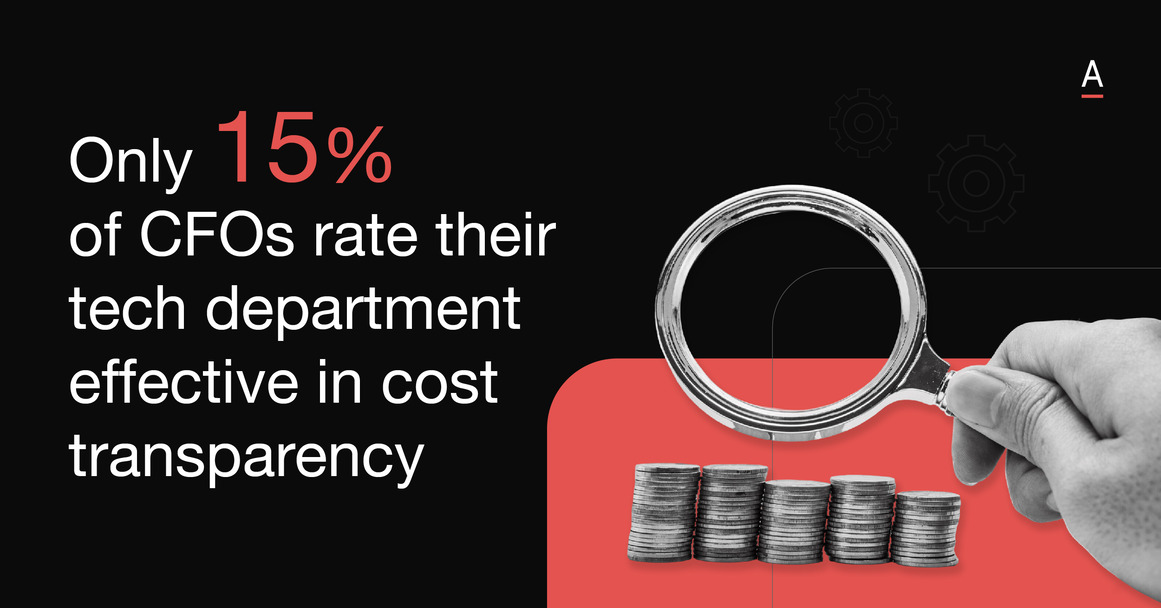How to sell to the Australian CIO
Get actionable strategies for tech vendors to support Australian CIOs, addressing challenges and enhancing collaboration, security, and budget optimisation.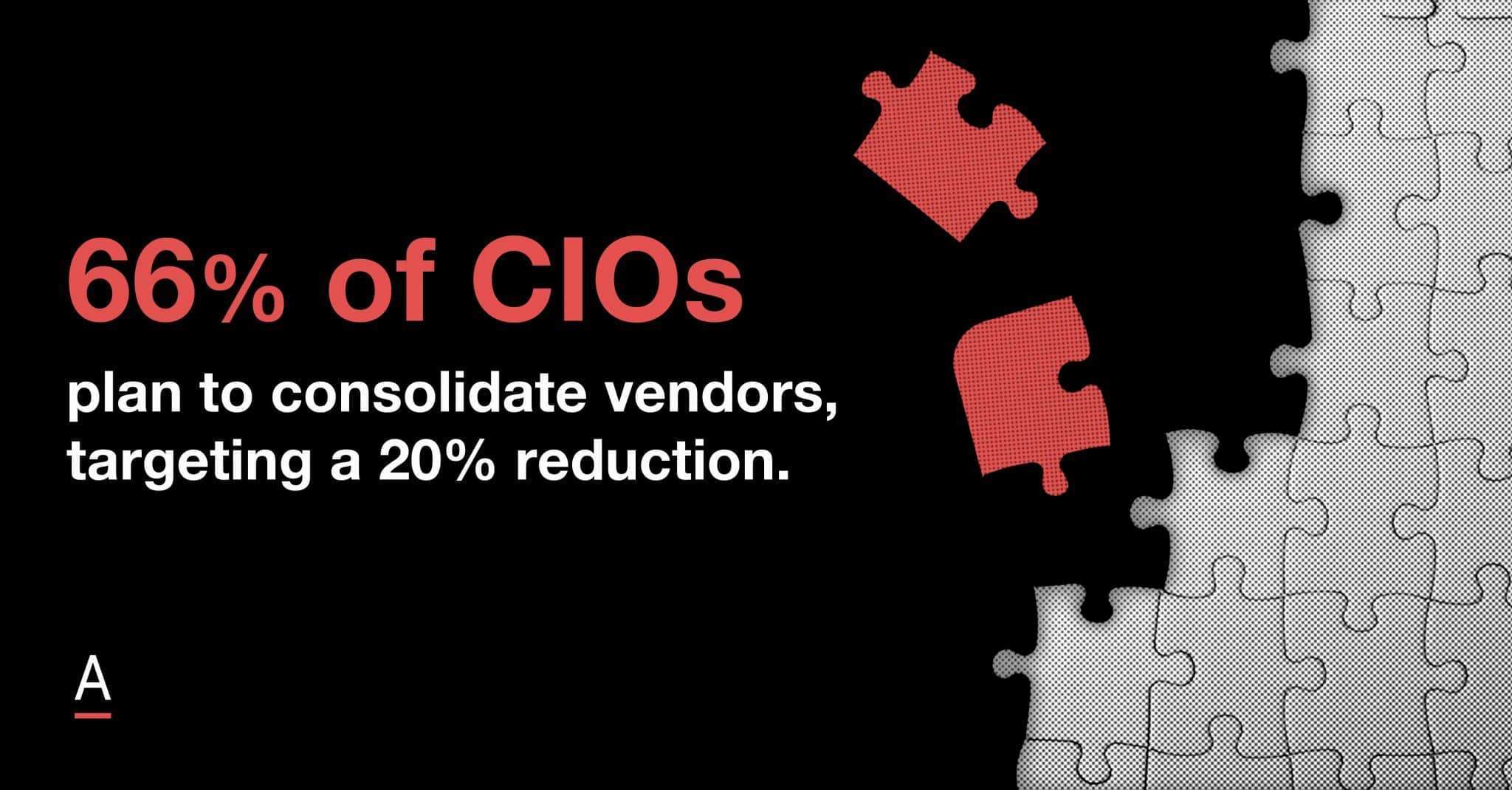
Chief Information Officers (CIOs) are at the forefront of addressing their organisations’ complex technological and strategic demands.
Their role in 2024 will be defined by the balancing act between maintaining legacy systems, advancing AI capabilities, and managing economic pressures.
70% of CIOs report being under-resourced while 66% feel unprepared for AI initiatives.
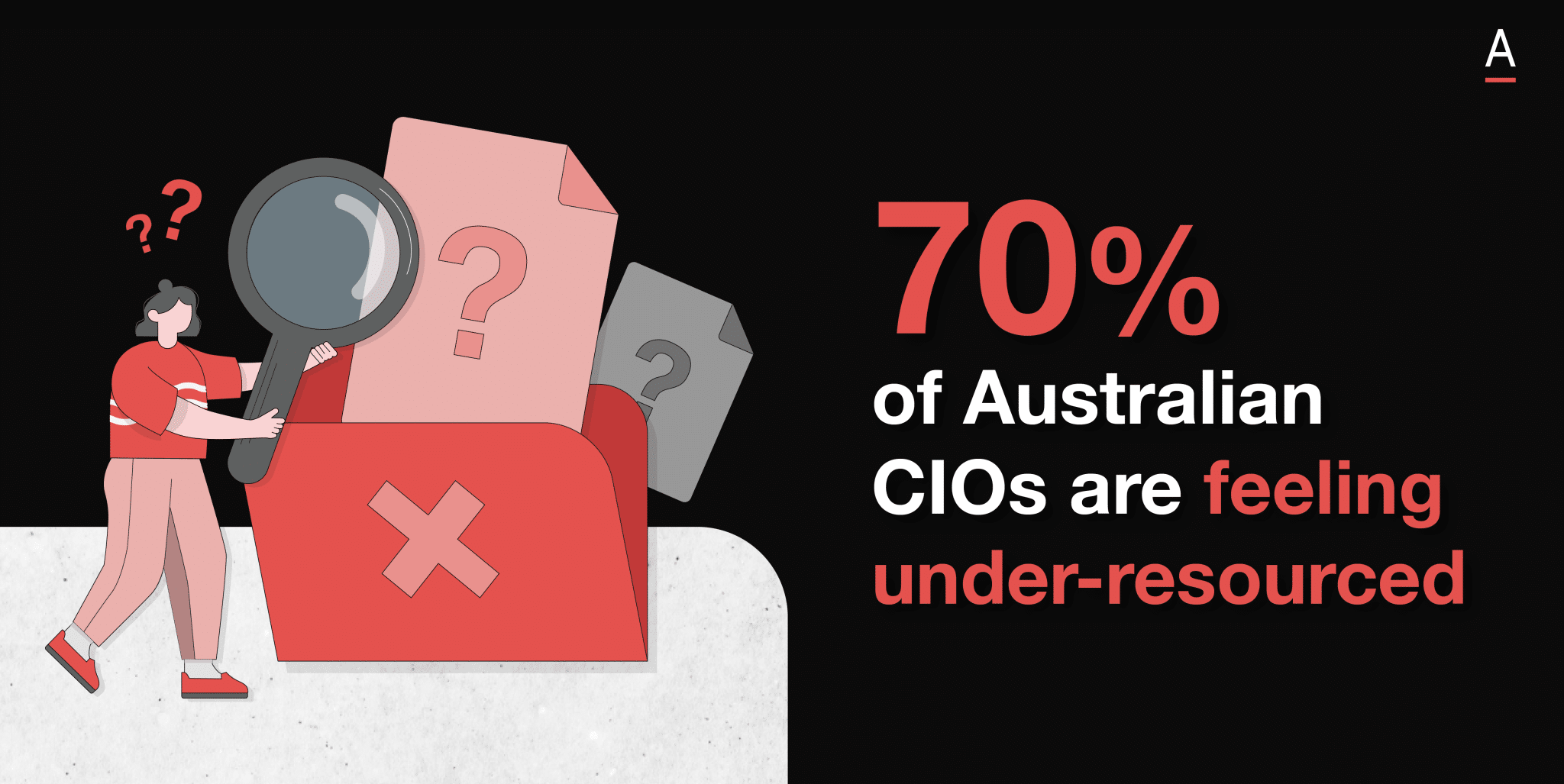
This article delves into these challenges, outlining the strategic priorities of CIOs and offering practical guidance for tech vendors to support their efforts effectively.
Addressing key challenges in modernisation and innovation for Australian CIOs
In 2024, CIOs navigate complex challenges that demand a strategic approach to managing legacy systems, advancing new technologies, and handling economic pressures.
Navigating the digital knowledge gap and IT prioritisation
Australian CIOs face challenges due to a lack of digital savviness among their C-suite peers.
With less than 50% of executives understanding the strategic value of new technologies, CIOs struggle to gain support for innovative projects, often finding themselves viewed as operational rather than strategic leaders.
IT prioritisation adds to this difficulty.
Limited resources force CIOs to make tough decisions, resulting in shadow IT as departments implement their own solutions.
Moreover, 66% of CIOs plan to consolidate their vendor portfolios to achieve a 20% reduction in costs, which places additional pressure on selecting the right strategic partners.

Additionally, shifting executive priorities can lead to misaligned IT projects, reinforcing the perception that IT is a bottleneck.
These issues collectively impede CIOs from driving strategic initiatives effectively.
Upgrading legacy systems to improve security
Outdated legacy systems remain a critical challenge for CIOs, often lacking the security and efficiency of modern technologies.
These inefficiencies not only create operational vulnerabilities but also expose organisations to significant security risks.
The increasing complexity of cyber threats, coupled with increasing regulatory pressure on boards, has intensified the urgency for modernisation.
CIOs are becoming more proactive, embedding security considerations into their IT initiatives from the outset to ensure compliance and resilience.
Modernisation and simplification rise as top priorities, with 61% of CIO resources dedicated to updating IT infrastructure—a strategic investment aimed at eliminating vulnerabilities, improving efficiency, and future-proofing operations.
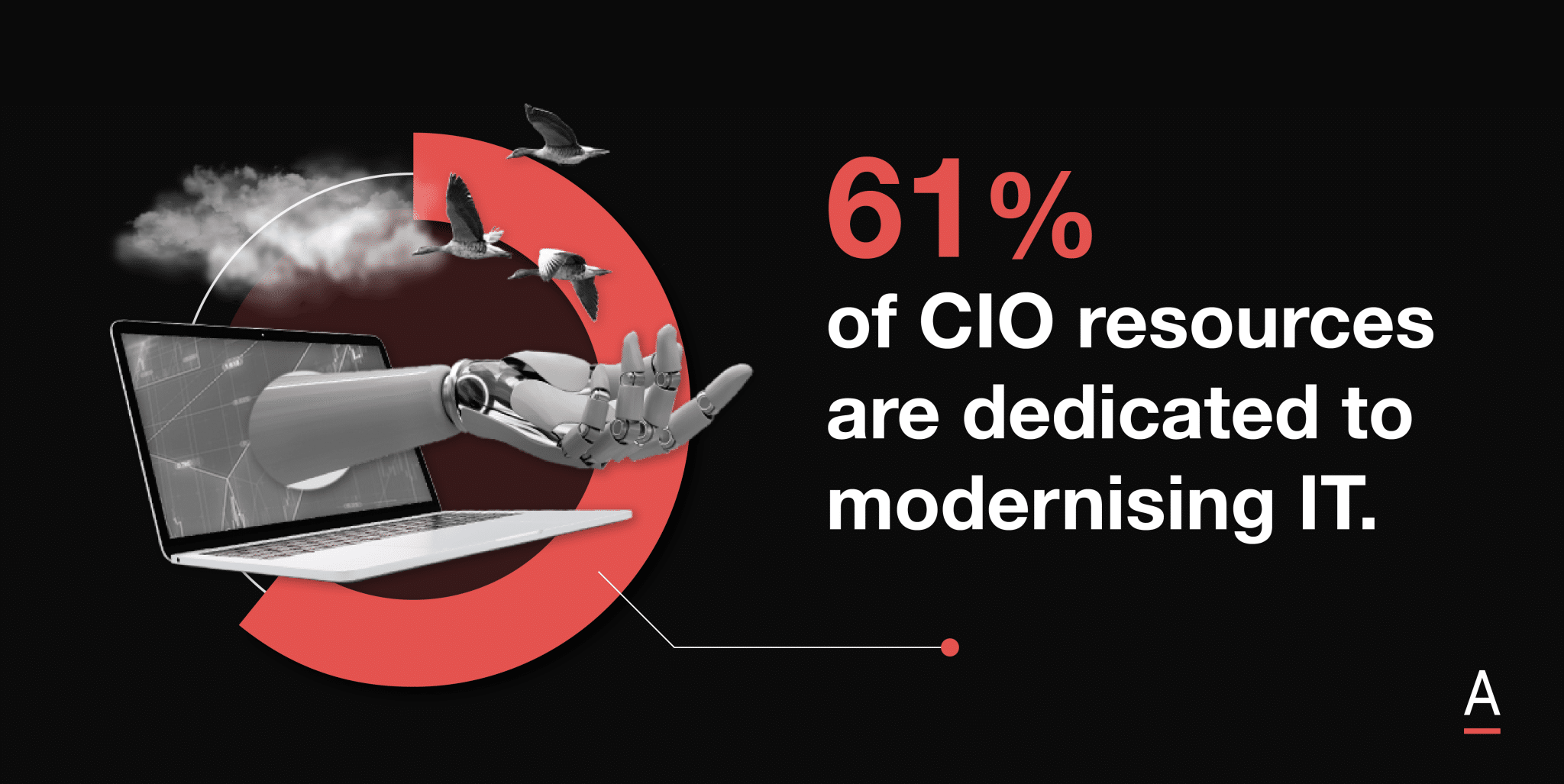
Overcoming resource constraints and AI readiness
Resource constraints are a critical issue, with 70% of CIOs in Australia reporting insufficient resources to deliver on their goals and initiatives.
Additionally, 64% of CIOs report needing a 30% increase in resources to meet digital delivery demands, underscoring the resource constraints they face.
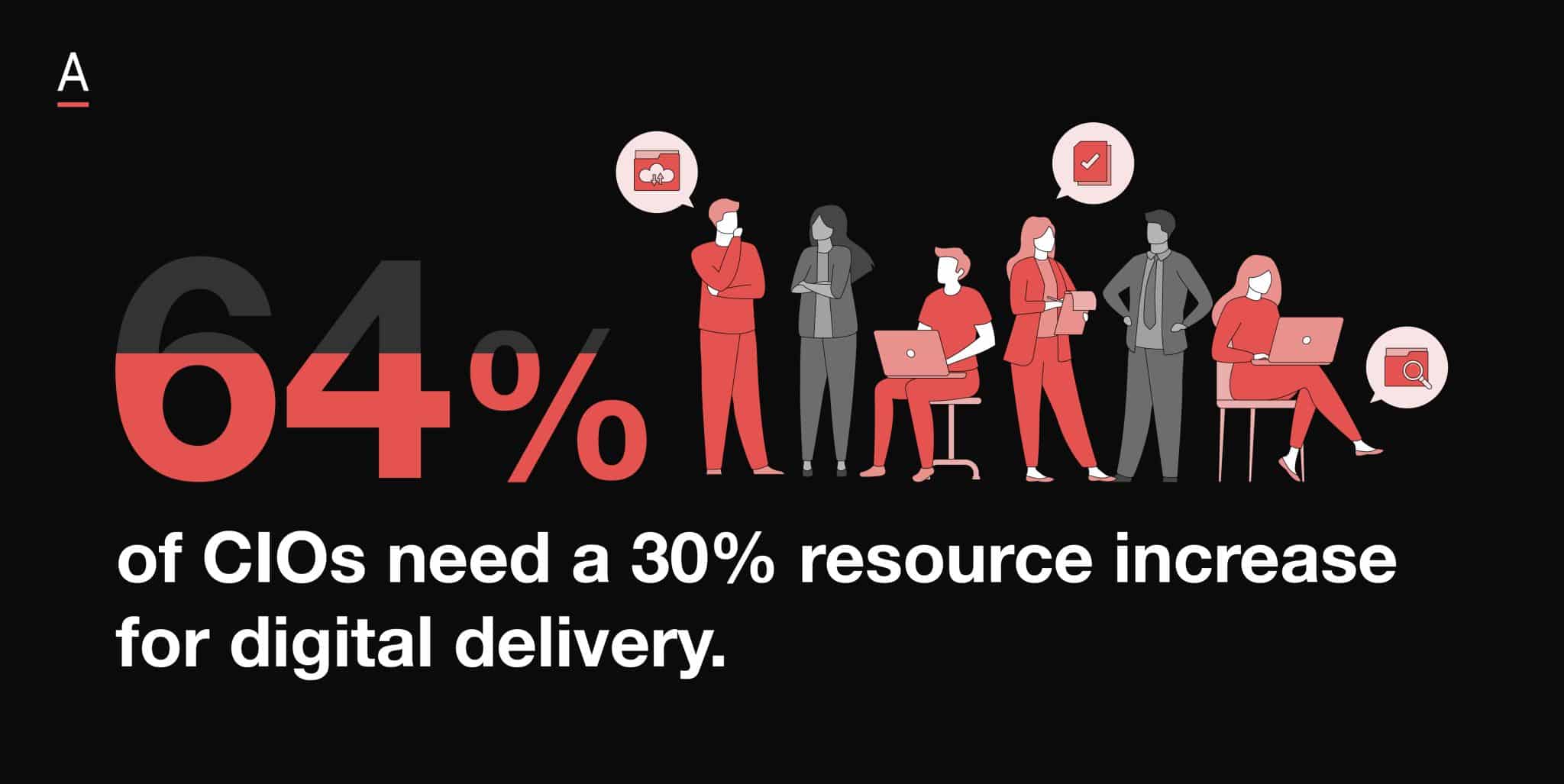
Meanwhile, 50% of CIOs expected to see an increase in their tech budgets this year.
Still, with rising costs and interest rates, they are under pressure to do more with less, improve efficiencies, and rationalise costs.
From 2019 to 2022, OpEx expenditures increased, driven by rapid cloud migration and the adoption of SaaS applications essential for hybrid work arrangements during the pandemic.
In 2022, 63% of CIOs’ budgets were allocated to OpEx, which slightly decreased to 57% in 2023.
The cloud migration process has slowed in recent years as organisations reevaluate where their workloads should reside to ensure the best return on investment.
This shortage hampers their ability to implement strategic projects, drive innovation, and enhance security measures.
Additionally, 70% of organisations do not expect to be ready to fully harness AI within the next year.
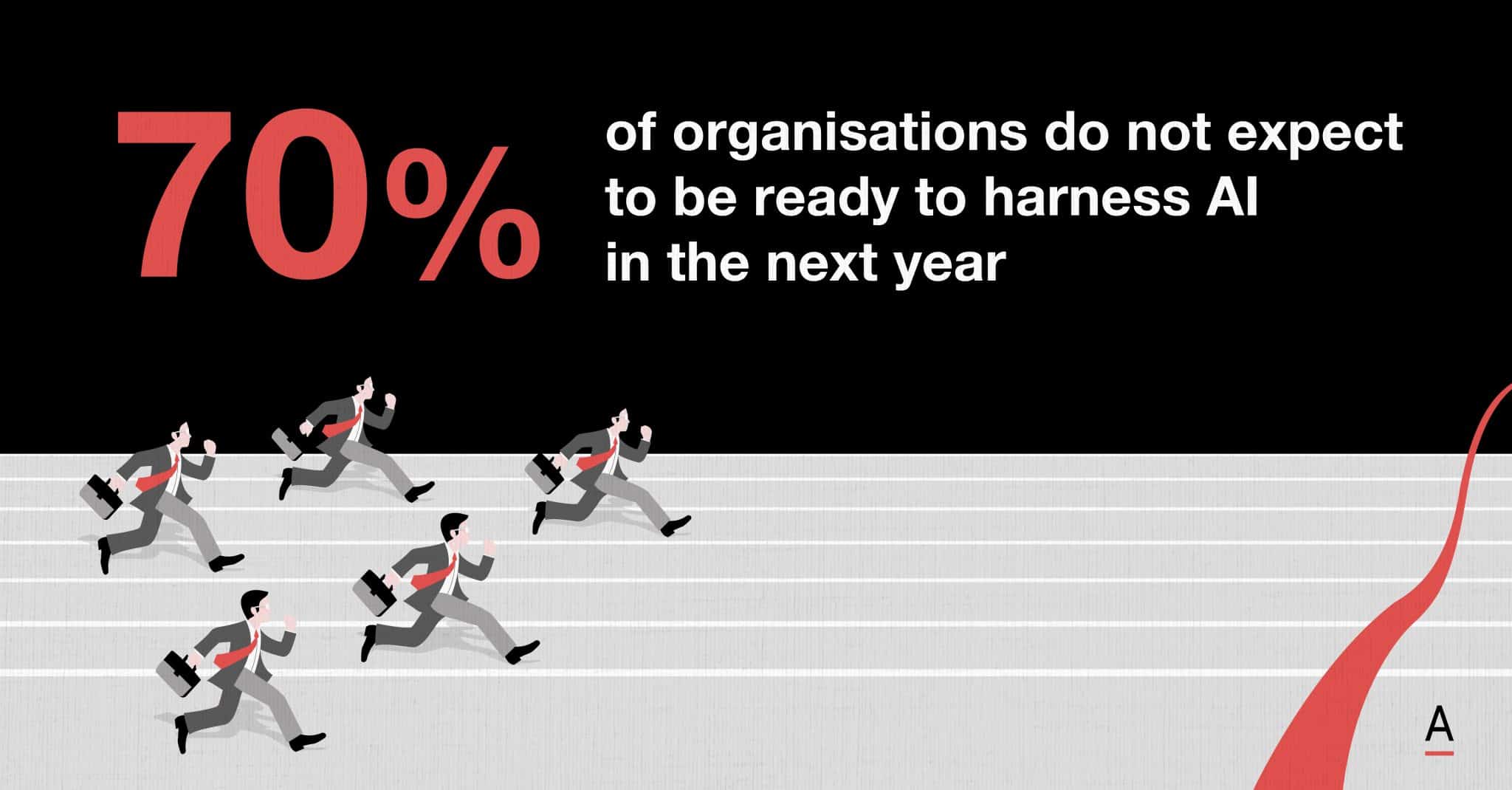
The top barriers to AI adoption include data quality issues, unclear regulations, and insufficient data skills.
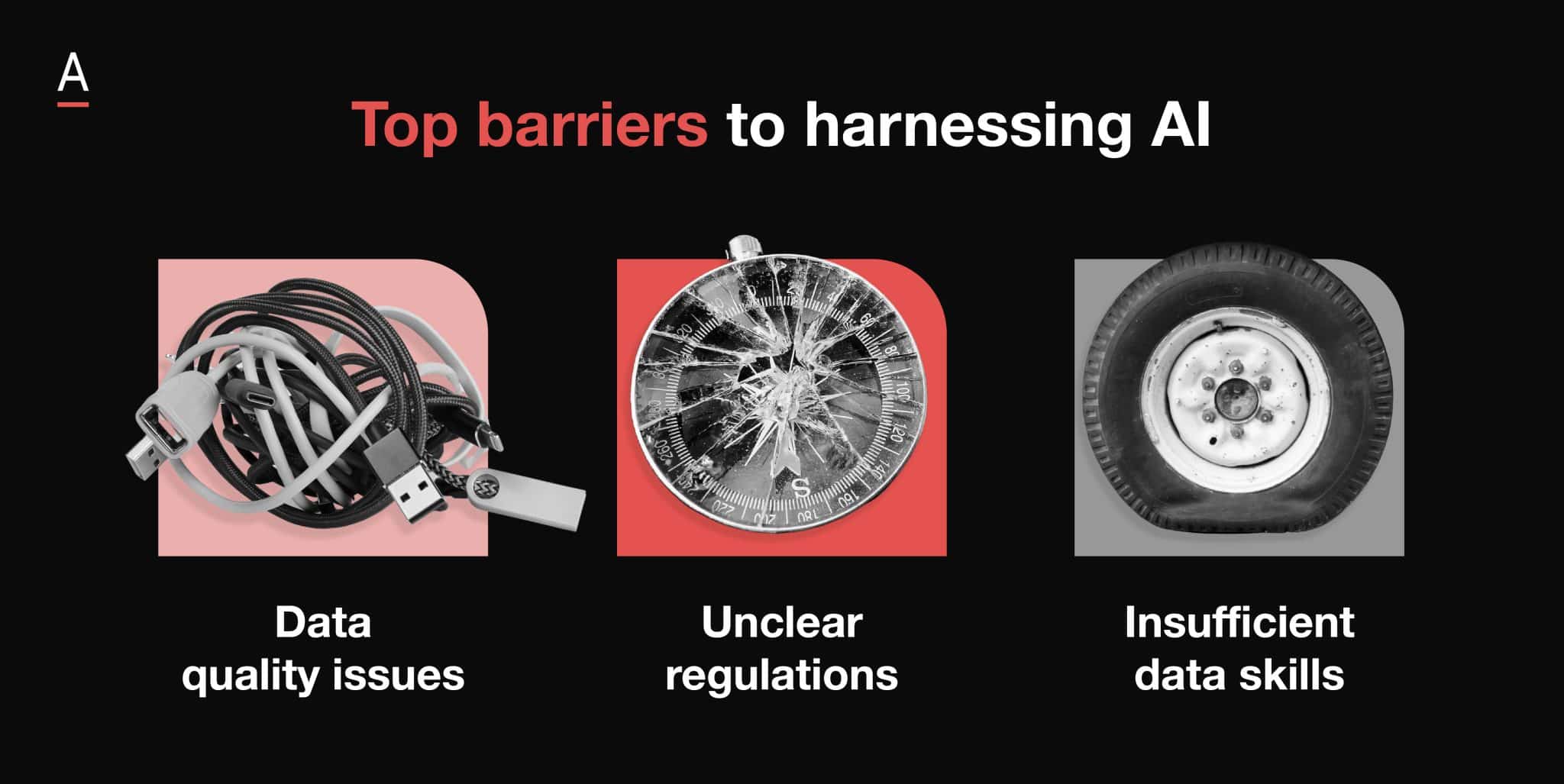
Failure of AI can lead to missed opportunities and competitive disadvantages.
Economic uncertainties add to these challenges, often forcing CIOs to prioritise short-term projects due to budgetary constraints.
Furthermore, organisational cultural resistance can cause resource allocation conflicts, slowing down digital transformation efforts.
Shifting focus from industries to customer domains
Organisations are increasingly transitioning from industry-specific strategies to focusing on customer “domains” to enhance value and manage rising cost pressures.
This approach, as highlighted by Dr Peter Weill of MIT at CIO Edge, emphasises end-to-end customer journeys in areas like financial wellbeing, energy efficiency, and sustainability.
Companies such as Shopify and Schneider Electric are leading the way, showcasing how this shift fosters deeper customer engagement and operational value.
Despite a 41% increase in operational value capture over the past year, only 27% of CIOs feel effective at capturing customer value.

By prioritising customer-centric solutions, organisations can address unmet needs while driving cost efficiencies.
Collaboration across ecosystems will be key to achieving seamless, fit-for-purpose technologies that improve experiences for both customers and employees.
Optimising IT strategies for Australian CIOs in 2024
To effectively address the identified challenges, CIOs focus on several key strategic initiatives.
These strategies are essential for overcoming resource constraints, modernising outdated systems, bolstering cyber security, and improving overall operational effectiveness.
Modernising IT infrastructure and allocating resources
This focus on updating IT infrastructure addresses the critical issue of managing outdated legacy systems, which often lack the security and efficiency of modern technologies.
By modernising these systems, organisations can eliminate vulnerabilities and operational inefficiencies, ensuring their systems are secure and efficient.
This investment is crucial for integrating advanced technologies like AI and machine learning, which can enhance operational efficiency and innovation.
To mitigate resource contraints, there is a growing trend of increased collaboration between CIOs and CFOs, with 75% of CFOs now playing an active role in technology decision-making.
This partnership ensures better alignment of technology initiatives with business goals, addressing the issue of insufficient resources and preparing organisations for AI integration.
Fortifying cyber security and streamlining operations
Cyber security is another top priority, with many Australian organisations focusing on fortifying their digital defences against cyber threats.

Given the increasing complexity and frequency of cyber attacks, CIOs invest heavily in enhancing their cyber resilience.
This strategy is essential for protecting sensitive data and maintaining a positive reputation.
Robust cyber security frameworks safeguard organisational assets and build customer trust, which is vital in today’s digital economy.
Economic uncertainties and competing business priorities add another layer of complexity to the CIO’s role.
To navigate these pressures, CIOs are prioritising automation and application modernisation.
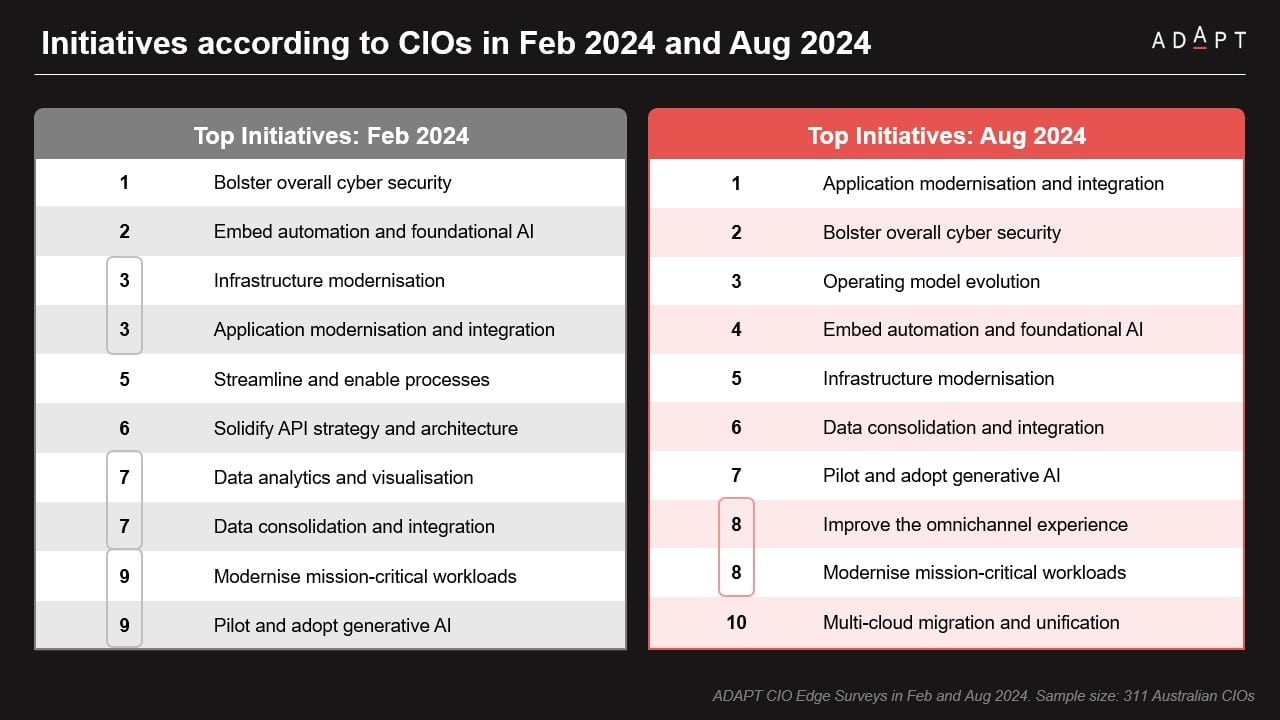
These initiatives help reduce operational costs and improve productivity, allowing IT staff to focus on more strategic projects.
Automation, in particular, addresses the challenge of balancing immediate needs with long-term value by streamlining processes and enhancing operational efficiency.
Advancing digital transformation and leveraging data-driven decisions
The shift towards cloud computing continues to be vital, with 38% of workloads now in the public cloud.
CIOs are reassessing their cloud strategies to manage the complexities of hybrid and multi-cloud environments.
This reassessment is crucial for optimising resources and improving data management, addressing the technical debt and operational inefficiencies associated with outdated systems.
Operational effectiveness remains a top priority, with a strong focus on leveraging AI and automation to reduce monotony and enhance employee engagement.
Investing in these technologies can boost productivity and employee satisfaction, which are critical for maintaining competitiveness.
The Digital Restart Fund, which has led to 80% of transactions being completed online, highlights the value of digital transformation efforts in improving service delivery and customer experience.
Continuous investment in digital initiatives is essential for enhancing customer satisfaction and operational efficiency.
Promoting a data-driven culture is crucial for making informed strategic decisions.
Despite 72% of organisations describing themselves as purpose and value-driven, only 6% effectively use automated decision-making, and only 32% have reliable insights.
Improving data analytics capabilities is essential for closing this gap, allowing organisations to leverage data for better decision-making and strategic planning.
Actionable strategies for tech vendors to support Australian CIOs
To effectively support Australian CIOs, tech vendors can implement the following strategies to address their unique challenges and priorities.
Provide comprehensive security solutions
Australian CIOs prioritise secure and trusted organisations, so focus on solutions that integrate seamlessly with existing systems and integrate security early in tech projects.
Demonstrate threat detection, incident response, and data protection to enhance an organisation’s security posture.
Clarify the need for good DevSecOps practices.
Discuss how incorporating security into the development process can impact market delivery speed and establish your stance.
Share success stories where your solutions prevented breaches and maintained operational integrity to demonstrate their value.
Support employee and customer experience enhancements
CIOs are tasked with delivering outcomes that improve employee and customer experiences.
58% of organisations need more AI readiness to impact their operations, highlighting the need for enhanced experiences through advanced technologies.
Offer solutions that improve employee and customer experiences, increasing satisfaction and retention rates.
Develop customer experience platforms that integrate with existing systems to provide a unified view of customer interactions.
Offer employee engagement tools that streamline workflows and enhance productivity.
Enhancing experiences for employees and customers leads to increased loyalty and better business outcomes.
Facilitate cross-organisational collaboration and prioritisation
Develop solutions that support cross-organisational collaboration, helping CIOs align priorities with other key stakeholders such as CFOs and Heads of Product.
As CFOs now play an active role in technology decision-making, showing the need for solutions that support cross-organisational collaboration.
Implement collaborative platforms that enable CIOs to engage effectively with different departments, ensuring alignment on strategic priorities and investment decisions.
Facilitating better collaboration helps CIOs break down silos, streamline decision-making processes, and accelerate project approvals.
Additionally, promoting sector collaboration can help address broader industry challenges and foster innovation by sharing insights and best practices across different organisations.
Tech vendors should demonstrate their capability as partners and advisors to help CIOs play a more prominent strategic role in tech decisions rather than being order-takers.
Help articulate the value of tech investments
Provide evidence-based business cases that clearly show the value of technology investments.
In 2024, CIOs navigate complex challenges that demand a strategic approach to managing legacy systems, advancing new technologies, and handling economic pressures.
Articulate value for each dollar spent, creating process efficiencies, optimising costs, and reducing customer friction.
Provide clarity on sunken costs versus funding changes and show the value IT delivers.
Highlight technical debt, as 73% of organisations identified it as an obstacle.
Use case studies to demonstrate how similar investments led to cost savings, process efficiencies, and revenue growth.
Show your capability as a partner in change management to support CIOs’ strategic decision-making.
Provide modular solutions for legacy systems
Offer modular, scalable solutions that allow CIOs to update their legacy systems incrementally, reducing risk and providing early benefits.
Propose phased modernisation plans starting with high-impact areas.
Incremental updates reduce operational risks and allow CIOs to show quick improvements.
Enhance credibility by addressing legacy system challenges effectively.
Support budget optimisation and cost management
Assist CIOs in driving down business-as-usual (BAU) costs to free up discretionary funds for innovation.
As mentioned, a 41% increase in resources is needed, according to top CIOs, showing the need to optimise budgets and manage costs effectively.
Provide tools and strategies that optimise both CapEx and OpEx expenditures.
Offer cost management software that identifies inefficiencies in current IT spending and provides actionable recommendations for cost savings.
Practical cost management tools allow CIOs to reallocate resources towards strategic initiatives without additional budget increases.
Focus on customer domains to enhance value
Help CIOs transition from industry-focused strategies to customer domains like financial wellbeing, sustainability, and shopping, enabling end-to-end customer journeys.
Provide solutions that digitise customer interactions, enhance engagement, and capture more value across domains.
Offer tools for ecosystem collaboration, fostering seamless service delivery and stronger partnerships.
Empower IT teams with low-code/no-code platforms and advanced UI/UX features to create domain-specific applications efficiently.
This domain-focused approach ensures CIOs can align IT strategies with customer needs, driving satisfaction and operational value.
Supporting Australian CIOs requires addressing their key challenges, from modernising legacy systems to enhancing employee and customer experiences.
Tech vendors can become invaluable partners by providing comprehensive security solutions, facilitating cross-organisational collaboration, and helping articulate the value of tech investments.
Offering modular solutions for legacy systems and optimising budgets ensures CIOs can navigate their resource constraints effectively.
Implementing these actionable strategies will help CIOs achieve their strategic goals and foster long-term partnerships with tech vendors.




